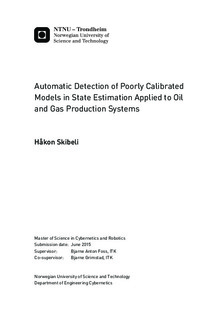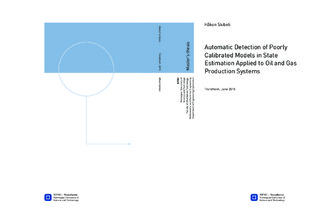| dc.description.abstract | In modern oil and gas industry, there is an increasing use of instrumentation. This lead to a
huge flow of information, which typically is not utilized to its full potential. By the use of increasingly more complex Virtual Flow Metering (VFM) solutions, the gap between the
amount of data available and the amount of data utilized is reduced. VFM can contribute to
operational awareness and increased efficiency of the operations, which are qualities that
are becoming more and more important for the operators. The performance of a virtual
flow meter is, however, highly correlated with the accuracy of the system models. Un-
fortunately these system models are infrequently calibrated, and with increasingly more
complex VFM models, these calibrations become more and more difficult to perform. To
further develop the field of VFM, this process of maintaining the models needs to be im-
proved. In this thesis, a system that can potentially simplify this process is investigated.
This thesis presents an investigation on the use of state of the art fault diagnosis tech-
niques, to detect and identify poorly calibrated models used in virtual flow metering. With
the help of the information gathered from the fault diagnosis, an operator can potentially
pinpoint when and where maintenance of the model is needed. If successful this can lead
to a shift from recalibrating the entire system, to focusing on the parts of the model that
have been determined as weak links. By going straight for the weak link, the operator can
save substantial amounts of time and money, while the reliability of the system models is
simultaneously increasing.
The investigation has been conducted by running test scenarios on a simulator created during this thesis. The tests on this simulator were performed using state of the art virtual flow meters, together with the fault diagnosis tools developed in this thesis.
The results show that this idea has good potential, and should be further investigated. The
results showed this by successfully detecting and identifying poorly calibrated models for
simple test scenarios. That being said, both of the developed fault diagnosis systems, still have some drawbacks and unresolved issues, which makes them less suited for real applications. Several sugges-
tions are, however, posted on how these issues can be resolved, and recommendations are
given regarding the direction of future investigations. | |

